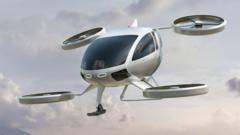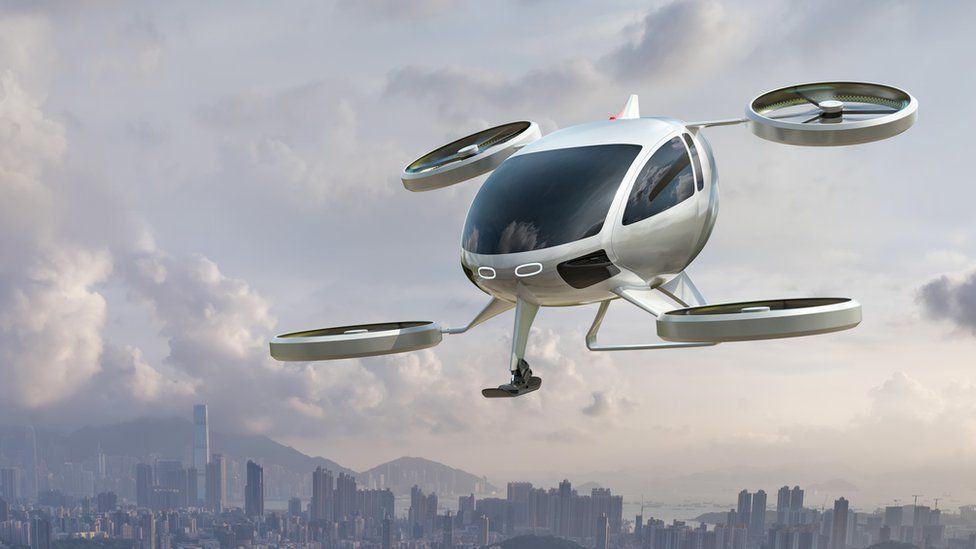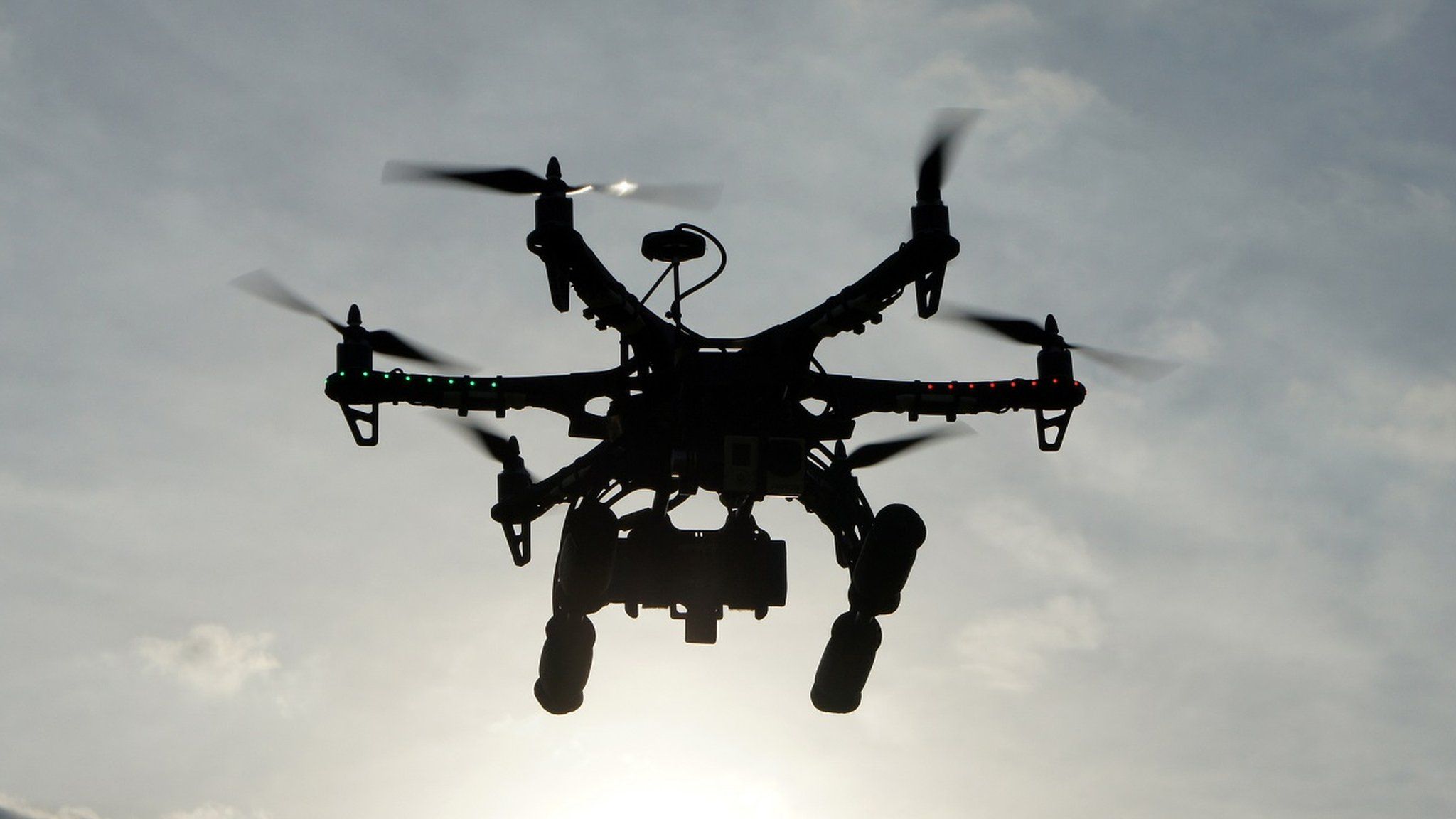Government wants flying taxis taking off in 2 years


The first flying taxi could take off in the UK by 2026 and become a regular sight in our skies two years later, if a government announcement goes to plan.
The Future of Flight action plan, developed with the aerospace industry, also says drones and other flying vehicles will become more autonomous.
It predicts that the first pilotless flying taxi will take off in 2030.
But experts say infrastructure needs to improve for this to become a reality for potential passengers.
“From flying taxis to emergency service drones, we’re making sure the UK is at the forefront of this dramatic shift in transportation – improving people’s lives and boosting the economy,” Aviation and Technology Minister Anthony Browne said.
Some of the uses of unmanned drones include transporting medical supplies, delivering post in rural areas and tracking down criminals on the run.
Their use is still in early stages, but the plan suggests drone deliveries would be commonplace by 2027.
The Department for Transport also plans to allow drones to fly beyond visual line of sight – meaning the person controlling the drone cannot see it in the air.

The biggest obstacles to getting flying taxis into the air are infrastructure and public perception, says Craig Roberts, head of drones, at consultancy firm PwC.
Last year, he co-authored a report on the topic, in collaboration with the government, on the viability of the technology.
“It’s challenging, but possible,” he says of the 2026 target.
Mr Roberts thinks that the most efficient use of the technology is in “longer distance, higher occupancy cases”.
The government’s report gives an example of flying from Liverpool to Leeds in 26 minutes.
But Mr Roberts predicts that the initial uptake would be small.
“It might start off as being more of a replacement for helicopters,” he says, before demand slowly spreads to the wider population.
The convenience would also have to be demonstrated to the wider public through technological advances in security screening.
The PwC report assumes a scenario where it takes 10 minutes from arrival at a flying taxi rank to taking off – currently challenging, given the length of time it takes to get through a conventional airport.
“The industry knows this is a problem and knows it has to be solved… But there are technological ways of doing this,” Mr Roberts says.
“What was holding this back for a long time was the barriers to certification of a new technology,” says Dr Nadjim Horri, lecturer in aerospace control at the University of Leicester.
However, he says that this is changing, with regulation starting to catch up with technological progress in the field.
He adds that it would also require confidence from the public to adopt the new technology but that 2026 is a realistic aim to get flying taxis into the air.
Where would the vehicles take off and land?
The proposals would require new infrastructure developments in the UK, such as “mini airports” for drones.
A mini airport was set up for four weeks in a car park near central Coventry in 2022 as a proof of concept.
The company behind it, Urban Air Port, sees the future of air taxis as additional to, rather than a replacement of, current modes of transport.
Its chief executive Andrea Wu says that transport hubs should be in urban centres but “there has not been enough investment in infrastructure” in the UK so far.
She calls the suggestion of flying taxis becoming a regular sight by 2028 an “ambitious timeline” given the need to build places for them to take off and land.
“But the whole industry agrees you have to put something down on paper in order to push this forward,” Ms Wu says of Monday’s announcement.
No other mini airports have been built or trialled since the demonstration two years ago. But according to the plan, the first vertiport (airport for vertical vehicles) will be operational this year.
The UK’s aerospace regulator, the Civil Aviation Authority, is consulting on proposals for vertiports at existing aerodromes.
Related Topics
-
-
18 October 2021

-

